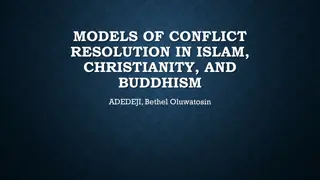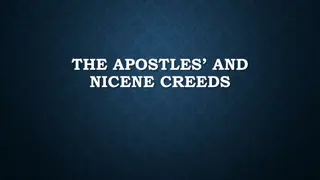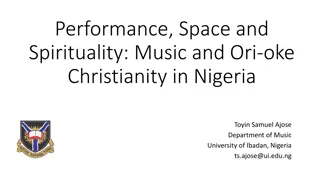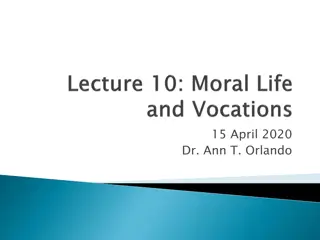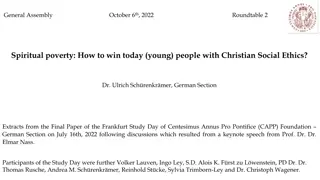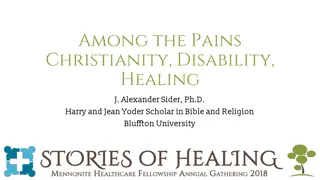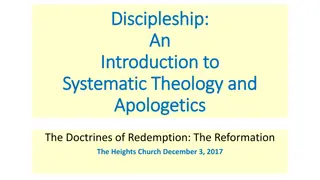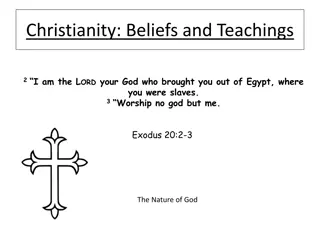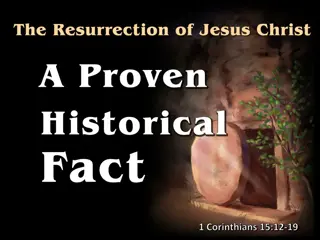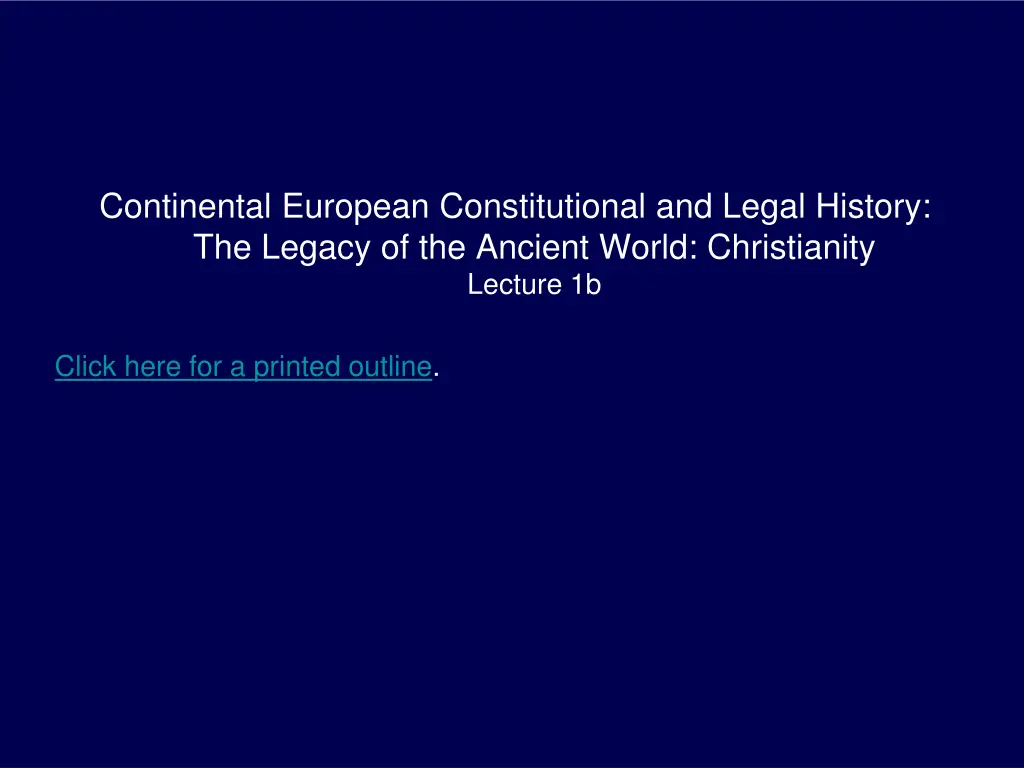
European Constitutional and Legal History: The Legacy of the Ancient World
Explore the historical legacy of Christianity in Continental European Constitutional and Legal History, focusing on Paul's Letter to the Romans and its theological significance in shaping the relationship between Judaism and Christianity. Delve into the intricate connections between faith, grace, and law as reflected in this foundational text.
Download Presentation

Please find below an Image/Link to download the presentation.
The content on the website is provided AS IS for your information and personal use only. It may not be sold, licensed, or shared on other websites without obtaining consent from the author. If you encounter any issues during the download, it is possible that the publisher has removed the file from their server.
You are allowed to download the files provided on this website for personal or commercial use, subject to the condition that they are used lawfully. All files are the property of their respective owners.
The content on the website is provided AS IS for your information and personal use only. It may not be sold, licensed, or shared on other websites without obtaining consent from the author.
E N D
Presentation Transcript
Continental European Constitutional and Legal History: The Legacy of the Ancient World: Christianity Lecture 1b Click here for a printed outline.
Introduction Pur avoider le stuffing del rolls ove multip Around the year 30 of our era an obscure itinerant Galilean preacher named Jesus the name means the Lord saves was executed by the Roman authorities. After his death his followers believed that they saw him risen from the dead. By the end of the first century his followers had produced a considerable body of literature about him that we know as the New Testament. By the middle of the second century, if not before, it had become clear that this group has become a separate religion; it is not just a sect of Judaism. The New Testament is not a law book, even in the way that parts of the Hebrew Bible, the so-called Old Testament, are law books. The New Testament does, however, have some things to say about law and legal topics.
Pauls Letter to the Romans Pur avoider le stuffing del rolls ove multip Paul of Tarsus was an observant Jew, who was not one of Jesus followers during the latter s life. He violently opposed the early Christians, participating in efforts to suppress them. He experienced a conversion and became as ardent a Christian as he had earlier been an opponent of Christianity. He felt that he was called to a special mission to be the apostle of the Gentiles, to convert non-Jews to Christianity. He went on three missionary journeys, preaching and founding churches in Greece and Asia Minor. The New Testament book called the Acts of the Apostles contains an extensive account of his activities. More can be determined from his letters, also found in the New Testament, although there is some doubt whether all of these may properly be attributed to him. The letter to the Romans was written in winter 57 58 at Corinth on Paul s third missionary journey. Paul went from there to Jerusalem where he was imprisoned by the civil authorities and taken to Rome; he probably was released in 63, the point at which the Acts of the Apostles ends. Traditionally Paul died a martyr s death in Rome in 67.
Pauls Letter to the Romans (contd) The letter to the Romans is perhaps the most theological of Paul s letters, certainly among the most polished. Its great theme is the relationship between Judaism and Christianity. Its immediate occasion may have been the problem of the mixed church in Rome and the tensions between Jewish and pagan Christians, but all we can sure of is that it is a letter of self-introduction. Pur avoider le stuffing del rolls ove multip The letter has been used for many purposes. It is the great letter of Martin Luther because of its emphasis on justification by faith and the free grant of God s grace. Perhaps less well known is the fact that many of the medieval and early modern treatises on law are laced with references to Romans, indeed, some may be said virtually to be commentaries on Romans.
Pauls Letter to the Romans (contd) Pur avoider le stuffing del rolls ove multip This ought to strike you as odd. What Paul has to say about law in Romans is not altogether flattering, and one can hardly escape the initial impression that in the great religious dichotomies between grace and free will, faith and reason, faith and good works, Romans emphasizes grace and faith at the expense of free will, reason and good works. Yet free will, reason, and good works would seem to be the foundations of any legal system, certainly of Western ones.
What does the letter to the Romans mean by law? The translation that is on the outline and in the slides capitalizes the word law , when the translators think that Paul is referring to the Mosaic Law, the Torah, the first five books of the Hebrew Bible, and uses a lower-case l when they think that he is not. But this distinctions in spelling does not exist in the manuscripts of the original Greek.
The argument of the letter to the Romans: the anger of God against both pagan and Jew Why God is angry against the Jews is easy. They have the Law but they do not keep it, Rom. 2:21 22: You preach against stealing, yet you steal; you forbid adultery, yet you commit adultery; you despise idols, yet you rob their temples. Why God is angry against the pagans is more complicated, 2:14 15: Pagans who never heard of the law but are led by reason to do what the law commands, may not actually possess the law but they can be said to be the law. They can point to the substance of the law engraved on their hearts they can call a witness, that is, their own conscience they have accusation and defense, that is, their own inner mental dialogue. Does this idea of law correspond to the Greek and Roman Stoic idea of natural law? Elsewhere (1:19) Paul suggests that God s plan can be seen in creation that certain sins are unnatural , homosexual acts being among those mentioned (1:26), but also envy, murder, treachery, rebelliousness to parents (1:29 30). Whether Paul is thinking we need not get into, because anyone who knew the Stoic idea of natural law would see the parallel.
The argument of the letter to the Romans: the relationship of faith and law (3:21 3:31) But where are we to find this law engraved on the hearts of the pagans? in the Torah? Yes, of course. but also (and this is the first big move in the letter) God s justice that was made known through the Law and the Prophets has now been revealed outside the Law . . . to everyone who believes in Jesus Christ. . . . [3:31] do we mean that faith makes the Law pointless? Not at all: we are giving the Law its true value. But that might suggest that the Law is still in force.
The argument of the letter to the Romans: the Christian is freed from the Law (7:1 8:1) 7:1: Brothers, those of you who have studied law will know that laws affect a person only during his lifetime. A married woman, for instance, has legal obligations to her husband while he is alive, but all these obligations come to an end if the husband dies. . . . That is why you, my brothers, who through the body of Christ are now dead to the Law, can now give yourself to another husband, to him who rose from the dead to make us productive for God. . . . The reason [8:1] therefore why those who are in Christ Jesus are not condemned, it that the law of the spirit of life in Christ Jesus has set you free from the law of sin and death. God has done what the Law, because of our unspiritual nature was unable to do. But what is now law?
The argument of the letter to the Romans: A new law for a new covenant.(13:8 9, 13:1 9) Avoid getting into debt except the debt of mutual love. If you love your fellow men you have carried out your obligations. All the commandments . . . are summed up in this single command: You must love your neighbor as yourself. 13:1: You must obey the governing authorities. Since all government comes from God, the civil authorities were appointed by God, and so anyone who resists authority is rebelling against God s decision . . . . The state is there to serve God for your benefit. If you break the law, however, you may well have fear; the bearing of the sword has its own significance. The authorities . . . carry out God s revenge by punishing wrongdoers . . . . This is also the reason why you must pay taxes since all government officials are God s officers . . . .
Some themes of the letter to the Romans The descending theory of power: Since all government comes from God, the civil authorities were appointed by God. The sword imagery: the bearing of the sword has its significance. The notion of natural law: Pagans who never heard of the law but are led by reason to do what the law commands. Winnow out the essential from the Mosaic law. The importance of authority but also freedom and equality. The multiplicity of meanings of the word law.
Marriage: the logia on divorce Mark 10:9: What God has united, man must not divide. Mark 10:11 12: The man who divorces his wife and marries another is guilty of adultery against her. And if a woman divorces her husband and marries another she is guilty of adultery too. Luke 16:18: Everyone who divorces his wife and marries another is guilty of adultery, and the man who marries a woman divorced by her husband commits adultery. Matthew 5:32: Everyone who divorces his wife, except for the case of fornication, makes her an adulteress; and anyone who marries a divorced woman commits adultery. Matthew 19:6: What God has united, man must not divide.
Marriage: the logiaon divorce (contd) Matthew 19:9: The man who divorces his wife I am not speaking of fornication and marries another, is guilty of adultery. 1 Corinthians 7:10 12: A wife must not leave her husband or if she does leave him, she must either remain unmarried or else make it up with her husband nor must a husband send his wife away. Hypothetical reconstruction of the earliest form of the more common logion: The man who divorces his wife and marries another is guilty of adultery.
The logiaon divorce (contd): the context (Mt. 19:312) 3Some Pharisees approached him, and to test him they said, Is it against the Law for a man to divorce his wife on any pretext whatever? 4He answered, Have you not read that the creator from the beginning made them male and female [Gn. 1:27] 5and that he said: This is why a man must leave his father and mother, and cling to his wife, and the two become one body? [Gn. 2:24] 6They are no longer two, therefore, but one body. So then, what God has united, man must not divide. 7They said to him, Then why did Moses command that a writ of dismissal should be given in cases of divorce? 8 It was because you were so unteachable he said that Moses allowed you to divorce your wives, but it was not like this from the beginning. 9Now I say this to you: the man who divorces his wife I am not speaking of fornication and marries another, is guilty of adultery.
The logiaon divorce (contd): context (Mt. 19:312) (contd) 10The disciples said to him, If that is how things are between husband and wife, it is not advisable to marry. 11But he replied, It is not everyone who can accept what I have said, but only those to whom it is granted. 12There are eunuchs born that way from their mother s womb, there are eunuchs made so by men and there are eunuchs who have made themselves that way for the sake of the kingdom. Let anyone accept this who can. Mishna Gitin 9:10 (Babylonian Talmud Gitin 90a): The school of Shammai say: a man should not divorce his wife unless he has found her guilty of some unseemly conduct, as it says, because he hath found some unseemly thing in her. [See Deuteronomy 24:1]. The school of Hillel, however, say [that he may divorce her] even if she has merely spoilt his food, since it says, because he hath found some unseemly thing in her. R. Akiba says, [he may divorce her] even if he finds another woman more beautiful than she is, as it says, it comes to pass, if she find no favour in his eyes. Dt 24:1: Suppose a man enters into marriage with a woman, but she does not please him because he finds something objectionable about her, and so he writes her a certificate of divorce, puts it in her hand, and sends her out of his house. The Hebrew is more ambiguous.
Marriage: Paul on divorce 1 Cor. 7:1215 If a brother has a wife who is an unbeliever, and she is content to live with him, he must not send her away; 13and if a woman has an unbeliever for a husband, and he is content to live with her, she must not leave him . . . . However, if the unbelieving partner does not consent, they may separate; in these circumstances, the brother or sister is not tied; God has called you to a life of peace.
Marriage: Ephesians 5:2533 Husbands should love their wives just as Christ loved the Church and sacrificed himself for her to make her holy. He made her clean by washing her in water with a form of words so that when he took her to himself she would be glorious, with no speck or wrinkle or anything like that, but holy and faultless. In the same way, husbands must love their wives as they love their own bodies; for a man to love his wife is for him to love himself. A man never hates his body, but he feeds it and looks after it; and that is the way Christ treats the Church, 30because it is his body and we are its living parts. For this reason, a man must leave his father and mother and be joined to his wife, and the two will become one body. [Gn. 2:24] This mystery has many implications; but I am saying it applies to Christ and the Church. 33To sum up; you too, each one of you, must love his wife as he loves himself; and let every wife respect her husband.
Two-witnesses in the Bible Dt. 19:15: A single witness will not suffice to convict anyone of a crime of any kind; whatever the misdemeanour, the evidence of two witnesses or three is required to sustain the charge. Mt. 18:16: If your brother does something wrong, go and have it out with him alone, between your two selves. If he listens, you have won back your brother. If he does not listen, take one or two others along with you: whatever the misdeamanour, the evidence of two or three witnesses is required to sustain the charge. But if he refuses to listen to these, report it to the community; and if he refuses to listen to the community, treat him like a gentile or a tax collector. 1 Cor. 13:1 2: This will be the third time I have confronted you. Whatever the misdemeanour, the evidence of two or three witnesses is required to sustain the charge. I gave you notice once, and now, though I am not with you, I give notice again, just as when I was with you for a second time, to those who sinned before, and to all others; and it is to this effect, that when I do come next time, I shall have no mercy.
Two-witnesses in the Bible (contd) As the translation shows, the italicized passages in Mt. 18:15 17 and 1 Cor. 13:1 2 are direct quotations in Greek of the Hebrew of Dt. 19:15. To these should be added chapter 13 of the book of Daniel, a Greek addition to the Hebrew text, the story of Susannah and the elders, too long to quote here in full, but it s given in full in the outline. It is a wonderful law story about how to examine witnesses.
Some key dates in the legal history of Christianity ?30 Crucifixion of Jesus 67 Traditional death of SS. Peter and Paul 70 First Roman destruction of Jerusalem c.96 Letter of Pope Clement I to the Corinthians c.100 approximate date of the last canonical books of the New Testament (though some of the epistles, e.g., 2 Peter, are almost certainly later) 132 35 Bar Cocheba revolt (second Roman destruction of Jerusalem) mid-2d century Beginnings of the tradition of pseudo-apostolic canons known as the didache (teaching) 2d century Scattered papal letters (later called decretals ) concerning heresy and discipline c.200 Redaction of the Mishna at Jamnia 3d century Continues papal letters concerning heresy and discipline
Some key dates in the legal history of Christianity (contd) 3d century Earliest known local councils or synods (deal with Easter date, baptism conferred by heretics, those lapsed during persecutions, bishops suspected of heresy or irregularly promoted) 312 Edict of Milan (toleration of Christianity) 325 Council of Nicaea (condemns Arius: Christ of same substance as God the Father; disciplinary canons) 366 384, 384 399 Decretal letters of Popes Damasus and Siricius 381 Council of Constantinople I (confirmation of Nicaea; canons) 431 Council of Ephesus (condemns Nestorius: Mary is Mother of God ) 440 61 Decretal letters of Pope Leo the Great 451 Council of Chalcedon (condemns monophysites: Christ has 2 natures) 4th & 5th centuries Many Western local councils (Rome, Gaul, Spain, Africa) promulgate canons on an ever-wider range of topics c.500 Redaction of the Talmud (in Babylon and Jerusalem)
A romp through the early legal history of Christianity The relative absence of law in Christian writing of the apostolic period A streak of antinomianism? The importance of the letter to the Romans in this regard The council of Jerusalem (Acts 15; Galatians 2) Why this seeming absence of law? Jesus in opposition to the legalism of the Pharisees Our own preconceptions of what law ought to be like: herewith of kerygma and didache The mission to the gentiles Preservation of unity, the concept of koinonia
A romp through the early legal history of Christianity (contd) Diverse ministries become pope, patriarch, bishops, priests, deacons, etc. What happens to all of this in the fourth century? The role of councils and decretals. Are we asking too much of law? Summary: nomos and kanon.

